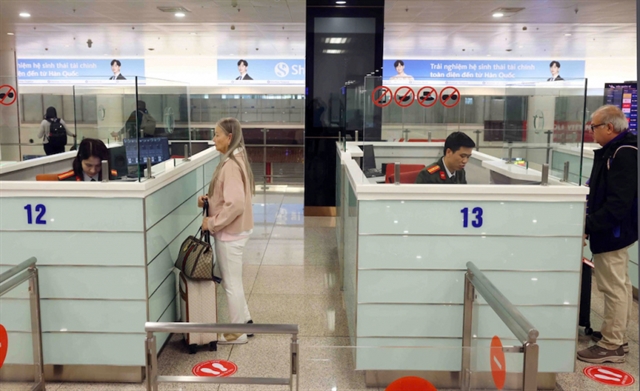 Economy
Economy


|
| The latest draft on retail electricity tariffs includes five tiers instead of the existing six. VNA/VNS Photo Huy Hùng |
HÀ NỘI — The Ministry of Industry and Trade (MoIT) has just sent the latest electricity tariffs to the Ministry of Justice for appraisal according to the draft of the Prime Minister's decision on the new retail electricity tariff structure replacing Decision 28 of 2014.
According to the ministry's Document 7970/BCT-DTDL sent to the Ministry of Justice, the latest draft on retail electricity tariffs includes five tiers instead of the existing six, with tier 1 from 0-100 kWh and tier 5 from 701 kWh or more. Of which, the price for tier 5 is proposed to be VNĐ3,612.22 per kWh.
The electricity tariffs for other tiers are VNĐ1,806.11 per kWh for tier 1 at the first 100 kWh; VNĐ2,167.33 for tier 2 from 101 - 200kWh; VNĐ2,729.23 for tier 3 from 201 - 400kWh, and VNĐ3,250.99 for tier 4 from 401 - 700kWh.
The proposed changes aim to minimise impact on electricity users. Accordingly, the current electricity tariff is maintained for the first 100 kWh to ensure stable electricity prices for poor households and social policy households with low electricity usage, accounting for 33.48% of households.
The price is also unchanged for consumption levels from 101-200 kWh and 201-400 kWh.
Electricity prices for tier 4 at 401-700 kWh and tier 5 from 701 kWh or more are set to offset other tiers' revenue, the ministry stated.
According to the ministry, the advantage of this plan is simple for people to understand because the electricity tariff structure is reduced from the current six to five tiers.
This change narrows the gap between the first steps and expands the pricing range for higher consumption levels, in order to reflect the actual electricity consumption. At the same time, it can partly limit the increase in electricity bills during the changing seasons.
The ministry believes that the price increase between levels is reasonable, and the difference between the first tier and the last tier is two times. This is consistent with the general trend of countries in the world to encourage economical and efficient use of electricity.
However, the disadvantage of this option is that households with high electricity usage from 711 kWh per month, accounting for about 2 per cent of total households, will have increased electricity bills.
At the same time, the ministry has also announced three options of electricity prices for electric vehicle charging stations.
For option 1, the electricity retail price structure for electric vehicle charging stations is set reflect the electricity production costs that electric vehicle charging stations cause to the electricity system.
The electricity tariffs of other options are according to price for business establishments (option 2) or for production establishments (option 3).
EVN and the Vietnam Consumer Protection Association propose to apply option 2. Meanwhile, the Ministry of Transport and the VinFast Trading and Service Limited Liability Company proposed to apply option 3.
However, the Ministry of Industry and Trade said if the retail electricity price for production is applied for electric vehicle charging stations, cross-compensation between customer groups will arise. Therefore, option 3 is not consistent with the policy stipulated in Resolution 55 of not cross-subsidising between customer groups. Therefore, the ministry recommends choosing option 2. — VNS


.jpg)

